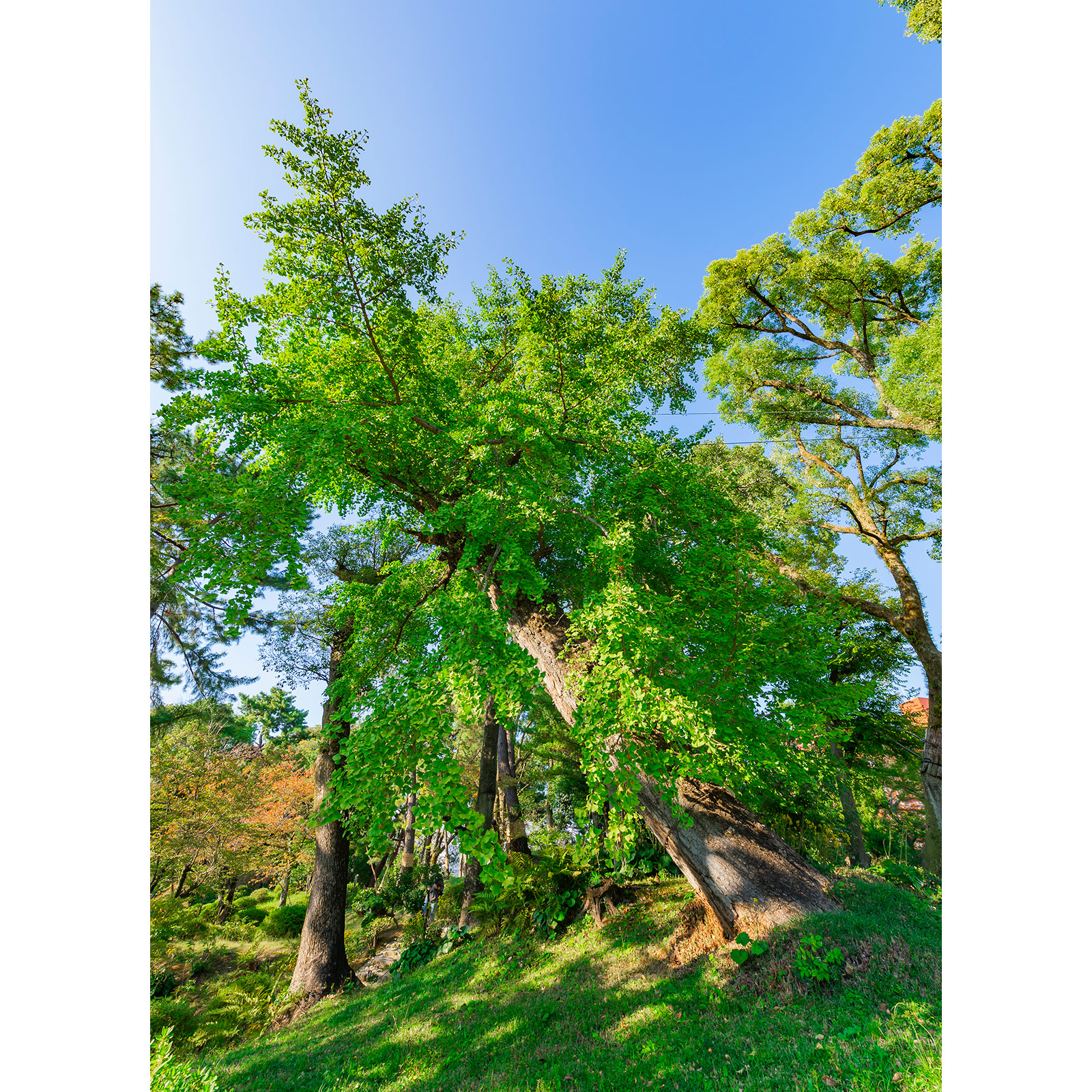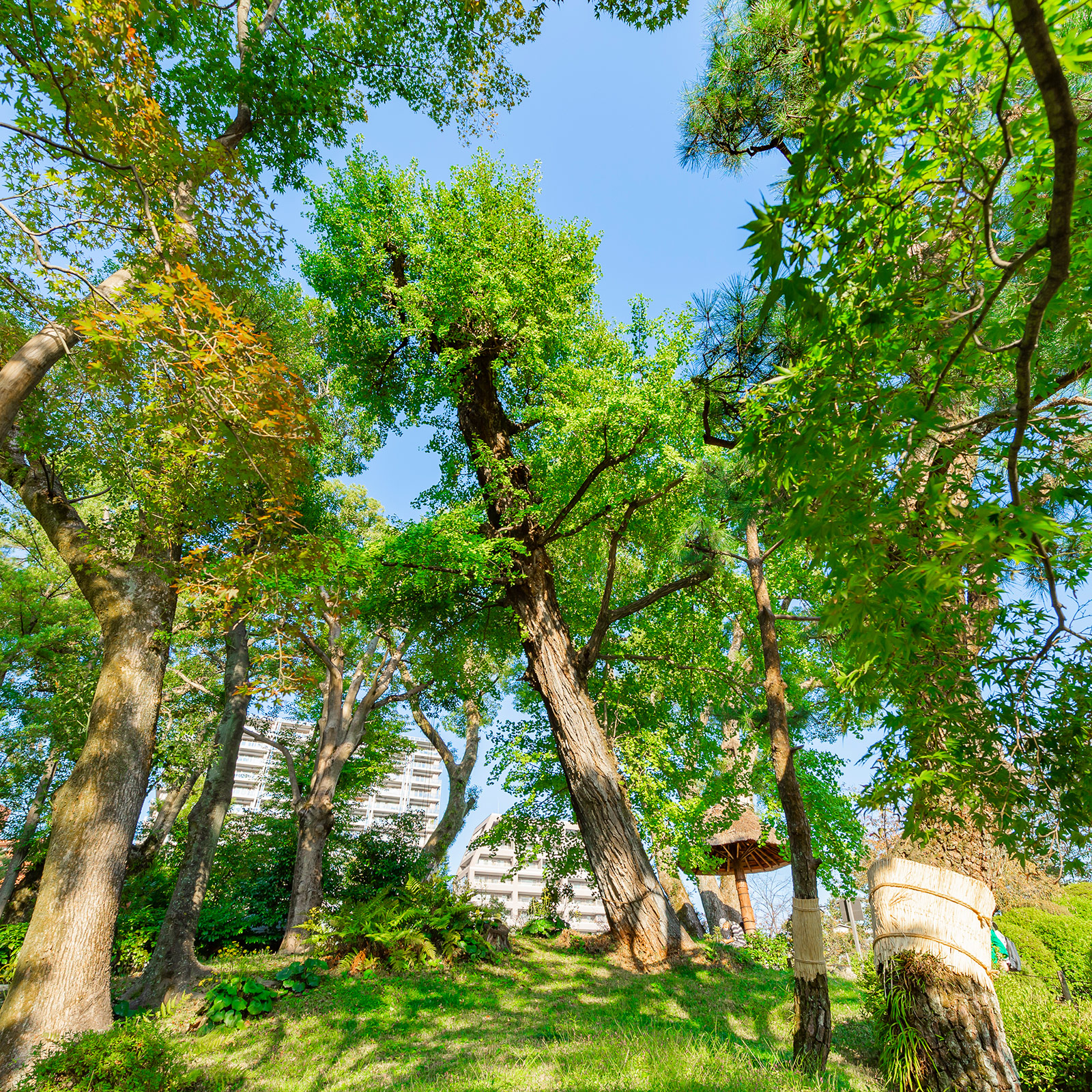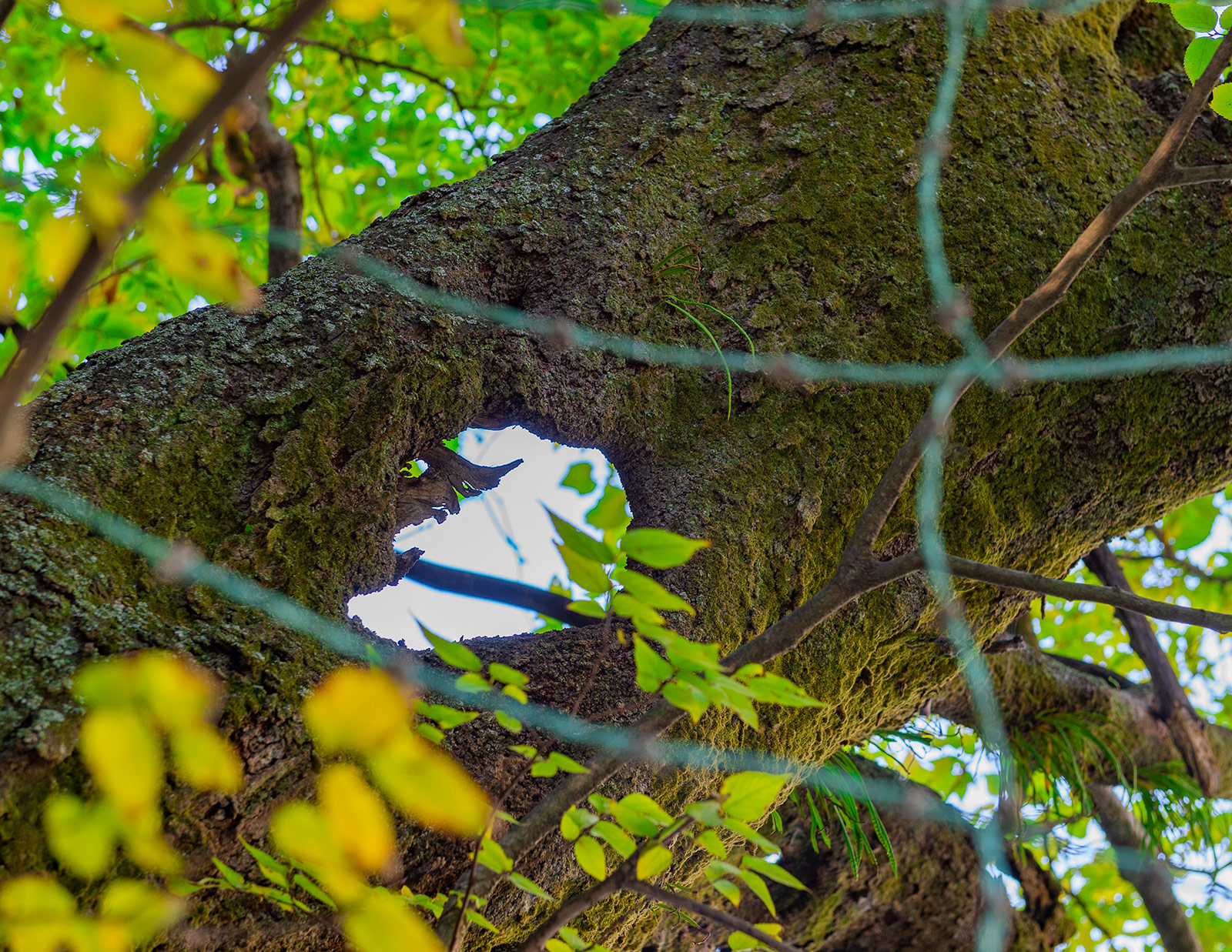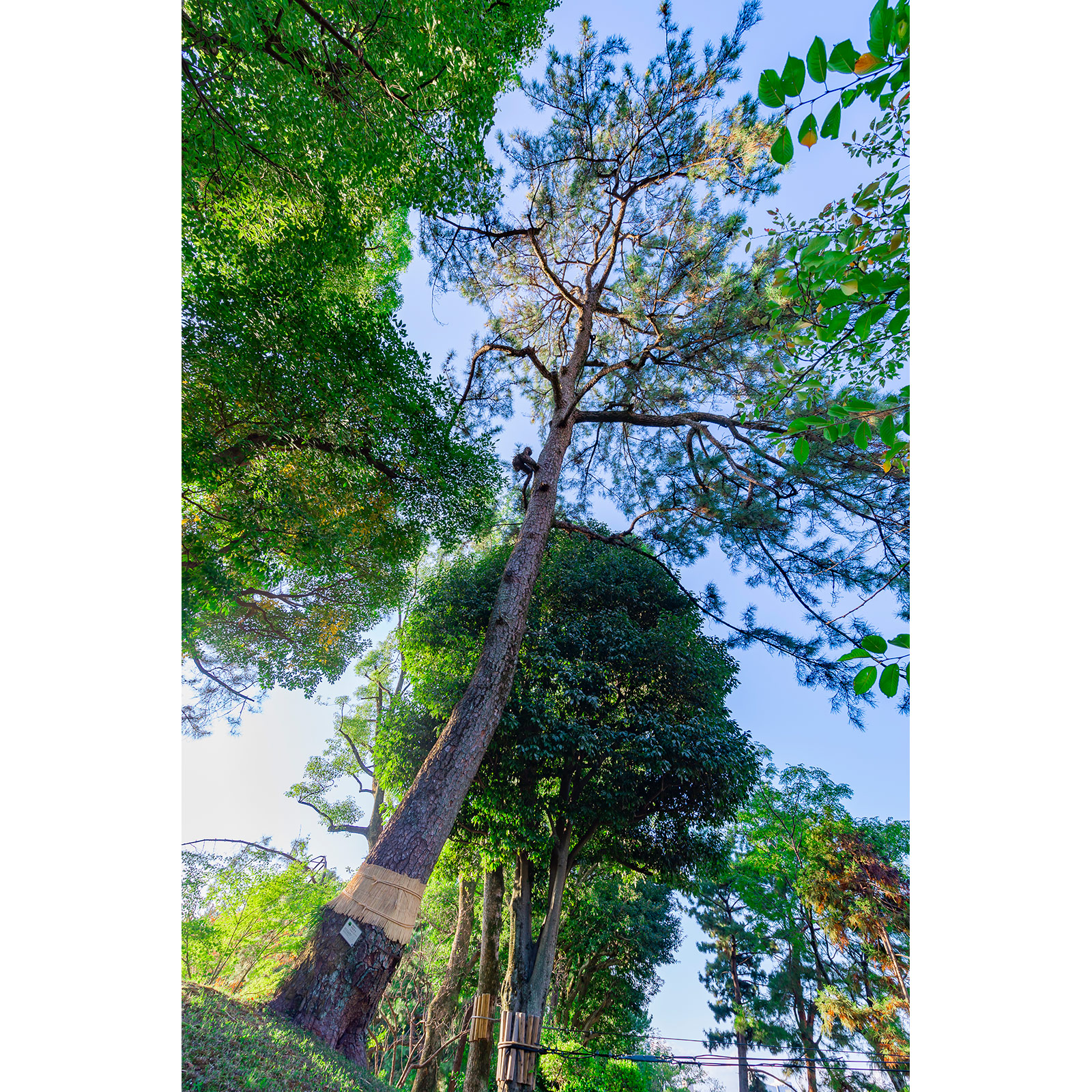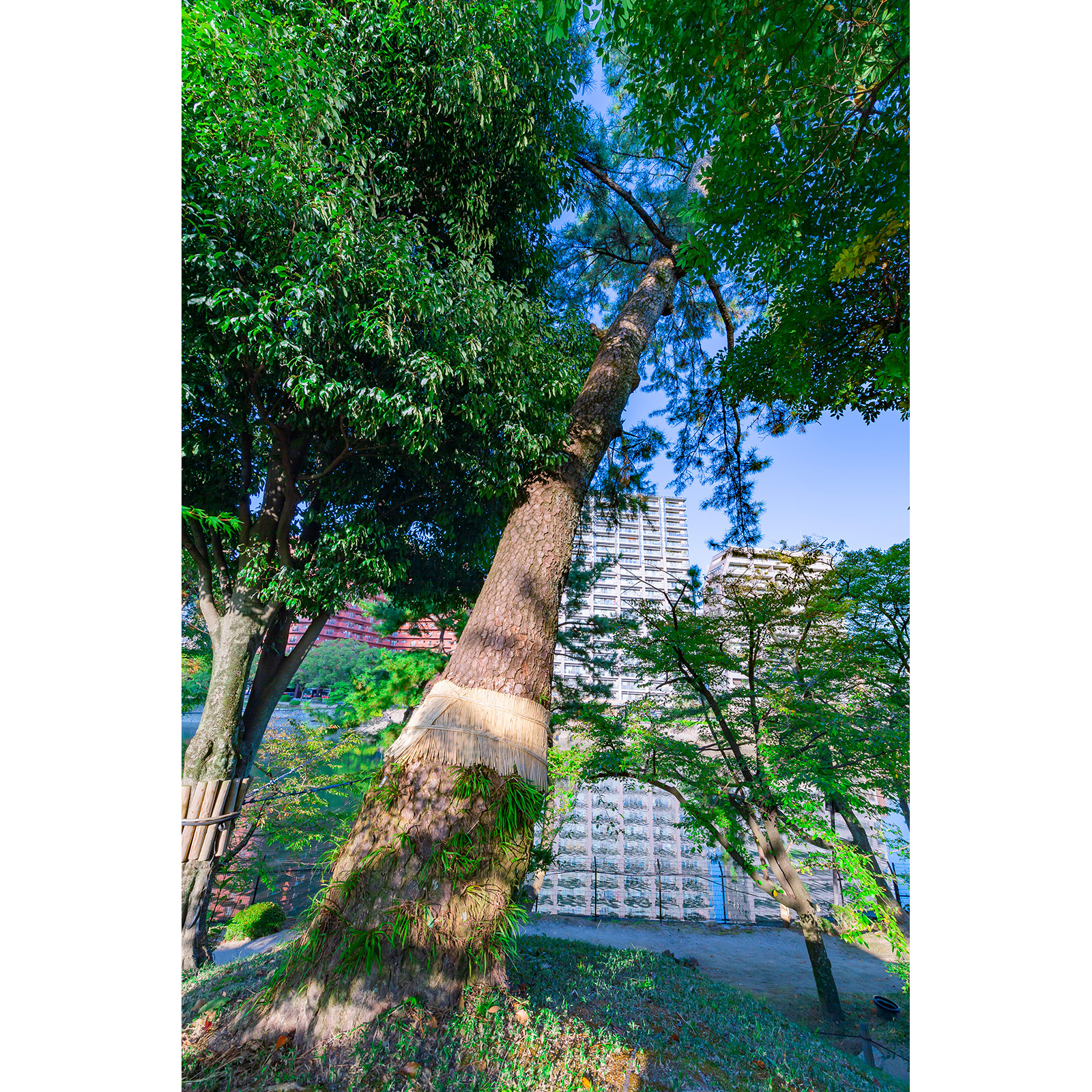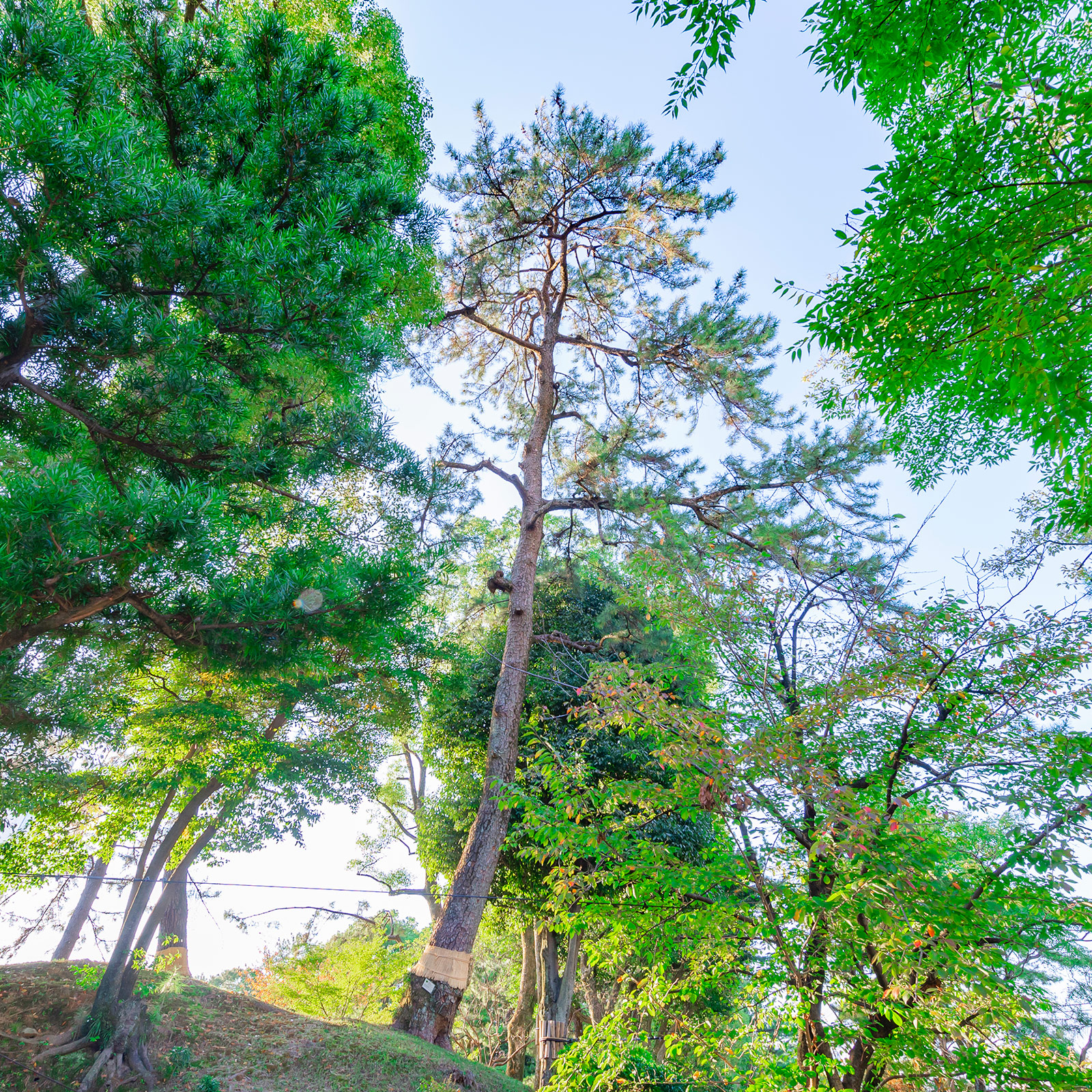縮景園(しゅっけいえん)は1620年、広島藩の初代藩主・浅野長昂(あさの・ながあきら)の命により、家老で茶人の上田宗箇(うえだ・そうこ)が築いた大名庭園です。原爆によって壊滅的な被害を受けましたが、多くの被災者が水を求めて、ここに逃げてきました。火傷を負った人々が池のまわりに並んで水を飲み、そのままの状態で亡くなったと伝えられています。原爆に耐えたイチョウは、爆心地の方向に大きく幹を傾け、上の部分は伐られていますが、毎年元気に実をつけています。庭園内にたくさん植えられていたクロマツは、爆風でなぎ倒されたり、葉をすべて失ったり、ほとんどが枯れてしまいました。そのなかで生き残った貴重な1本には、原爆の傷跡は見られず、園内一の大きさに育っています。また、京橋川に面した北側では、幹にいくつもの空洞があるムクノキが、壁を突き破るように傾いて、川に向かって飛び出しています。
Shukkeien is a traditional daimyō garden built by Sōko Ueda, a top-ranking samurai official and tea master, by order of the first Lord of the Hiroshima Domain, Naga-akira Asano, in 1620. The garden sustained catastrophic damage in the bombing, but many fled to Shukkeien in search of water. Victims who suffered burns would line up at the pond to drink water, and it is said that many passed away in that manner. The hibaku gingko tree leans severely in the direction of the hypocenter, and while the top portion has been cut, each year it bears fruit. Some of the Japanese black pines in the area were felled by the blast winds, and some lost their leaves, with nearly all of them withering. Of those, however, one managed to miraculously survive without a scratch, and today, it is the tallest tree in the garden. On the north side of the garden, which faces the Kyōbashi-gawa River, there is a muku tree with several hollows in the trunk that is bent over and juts out towards the river.

